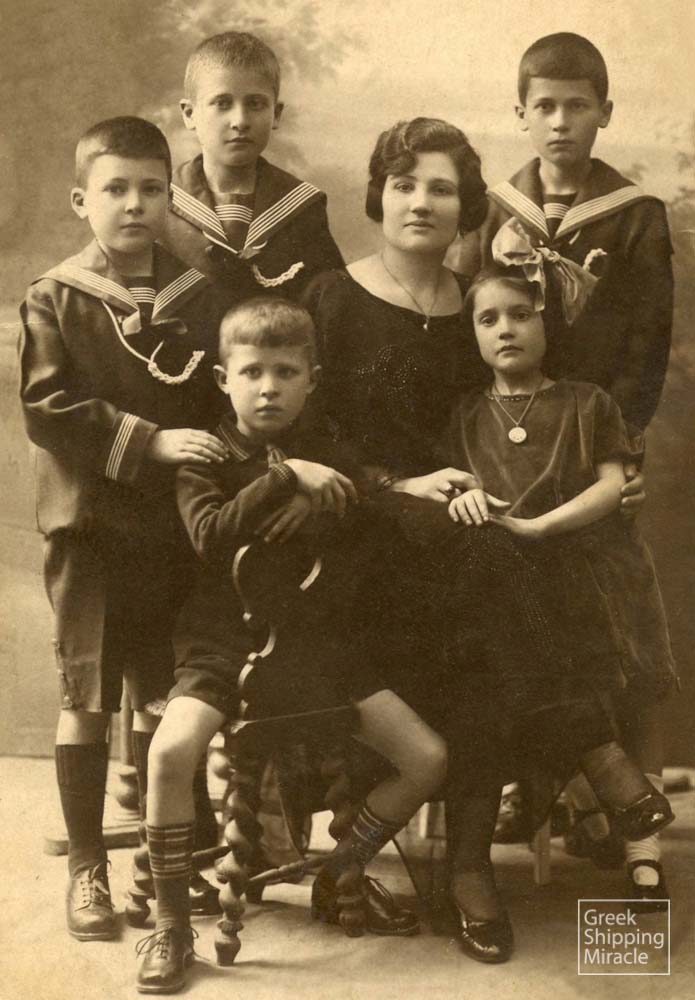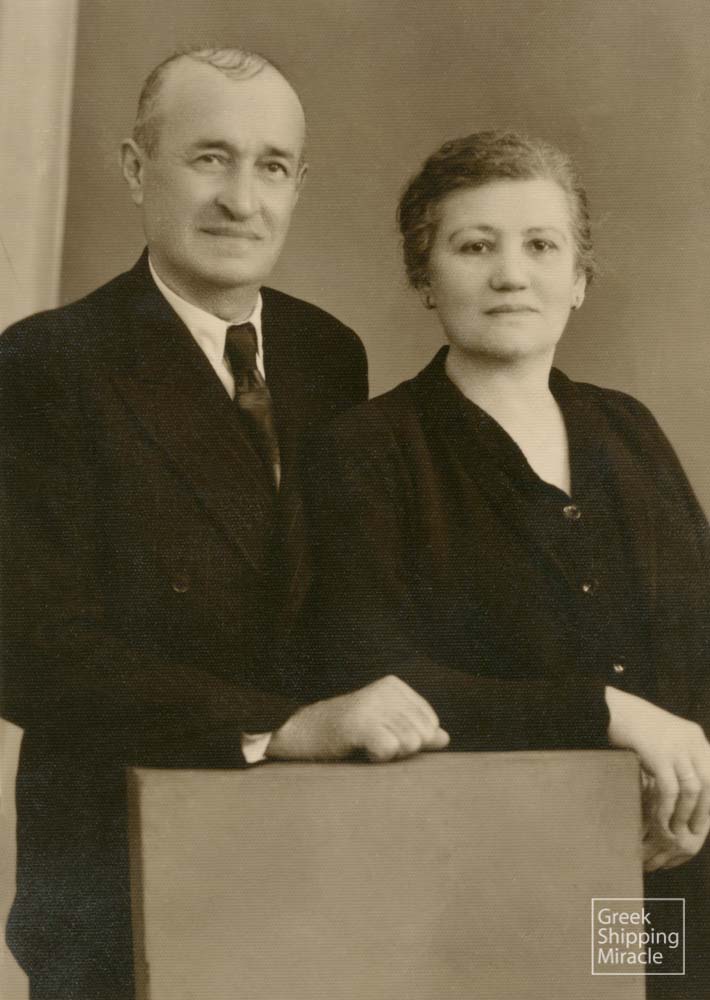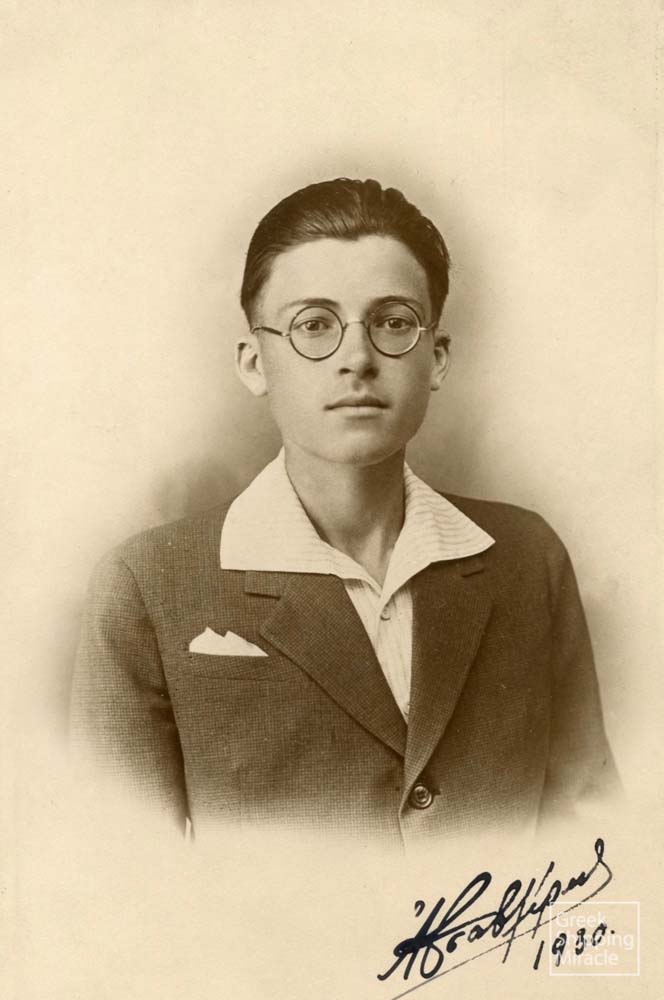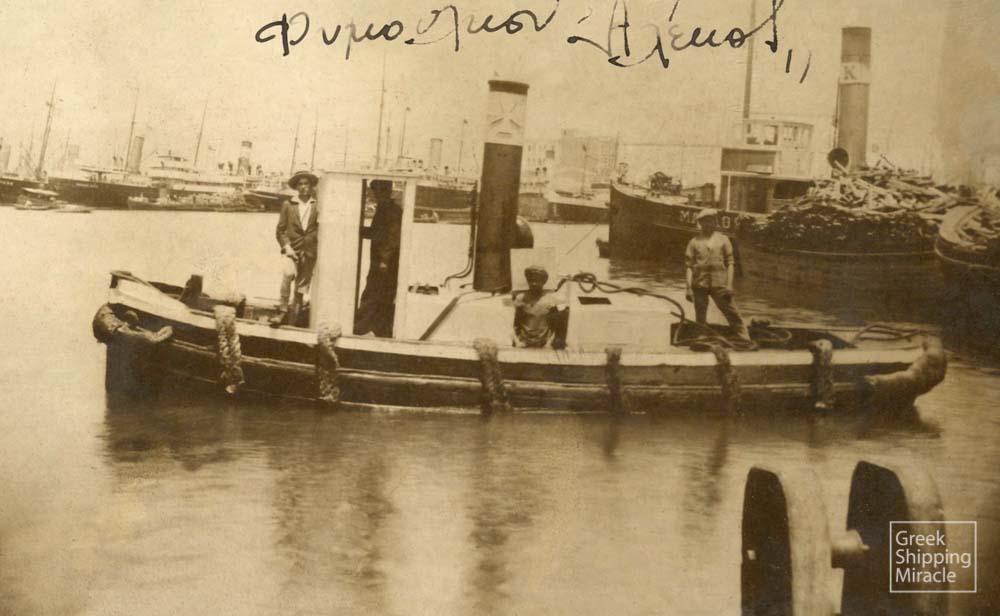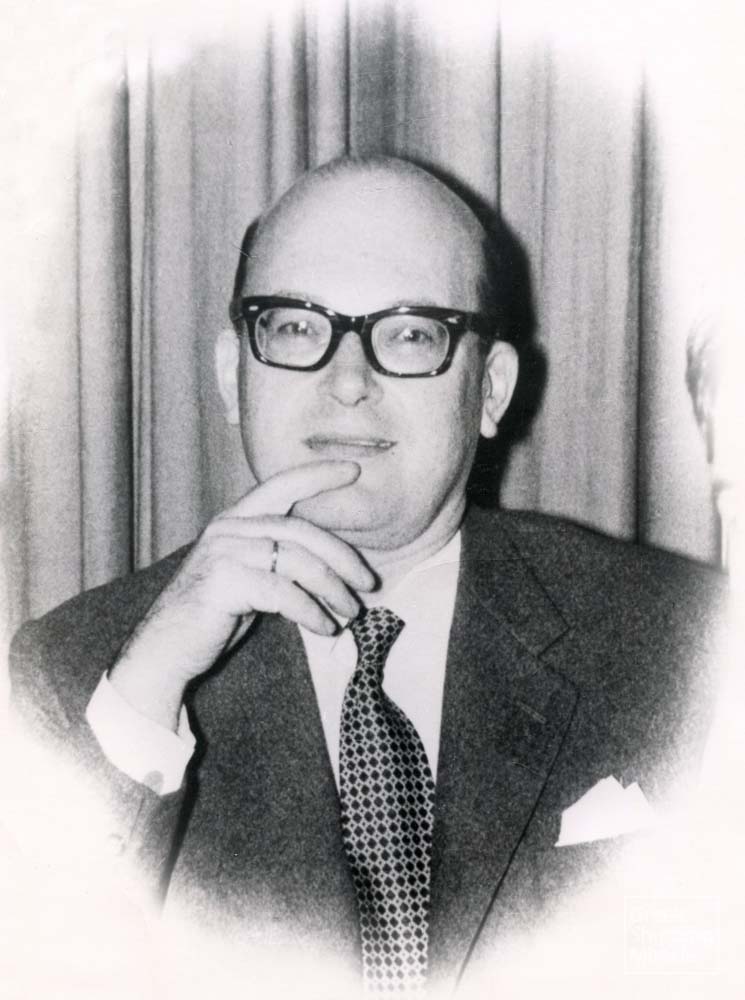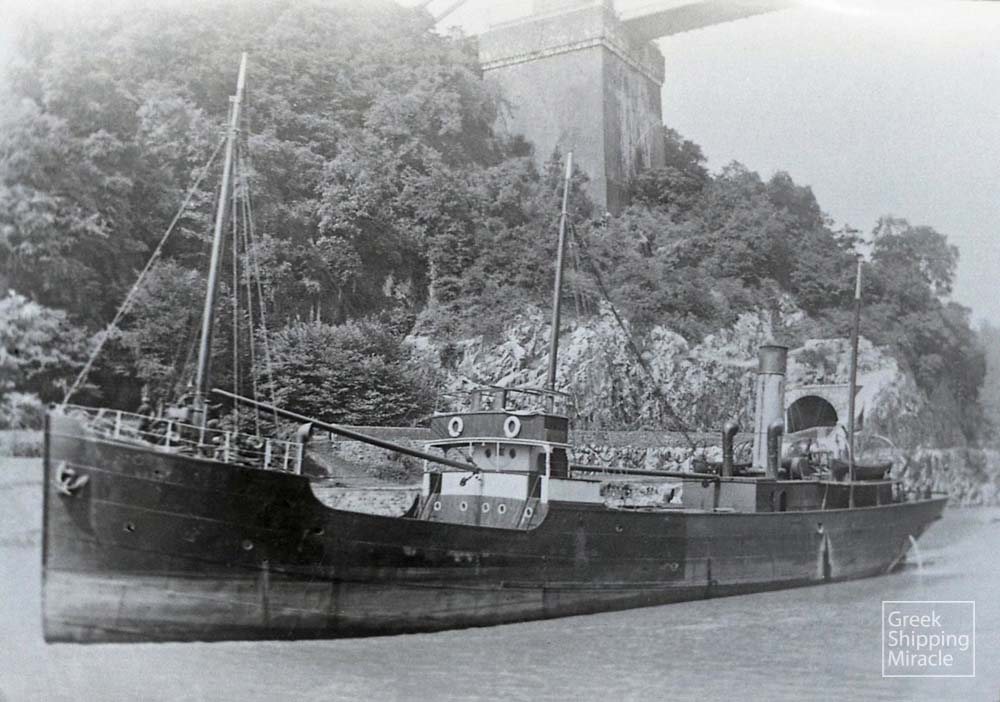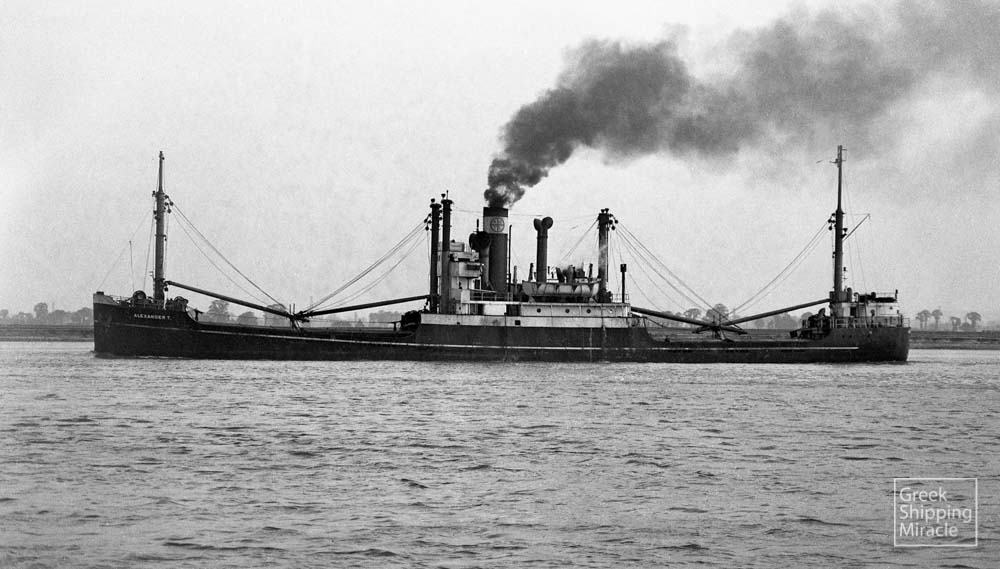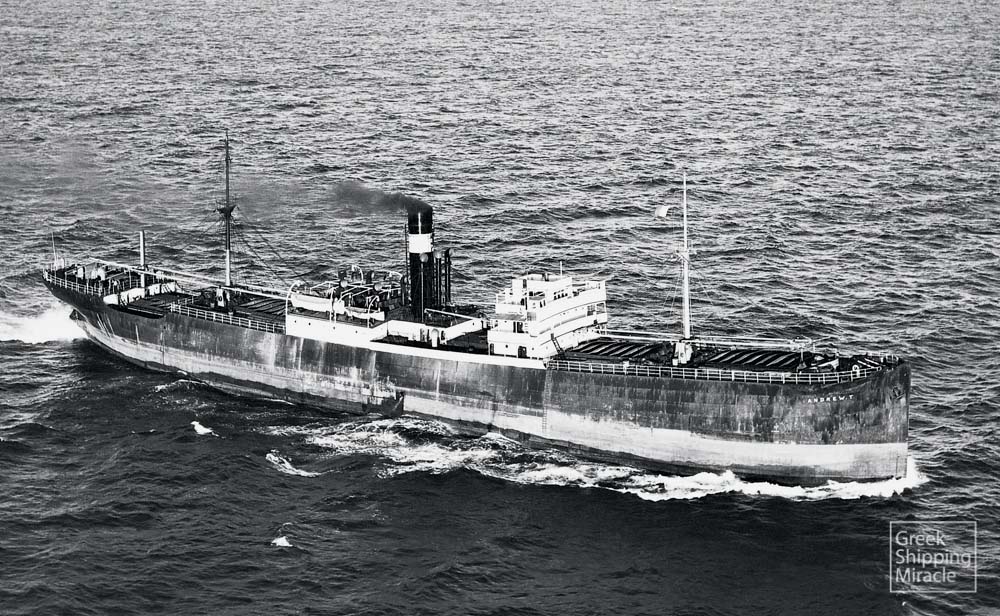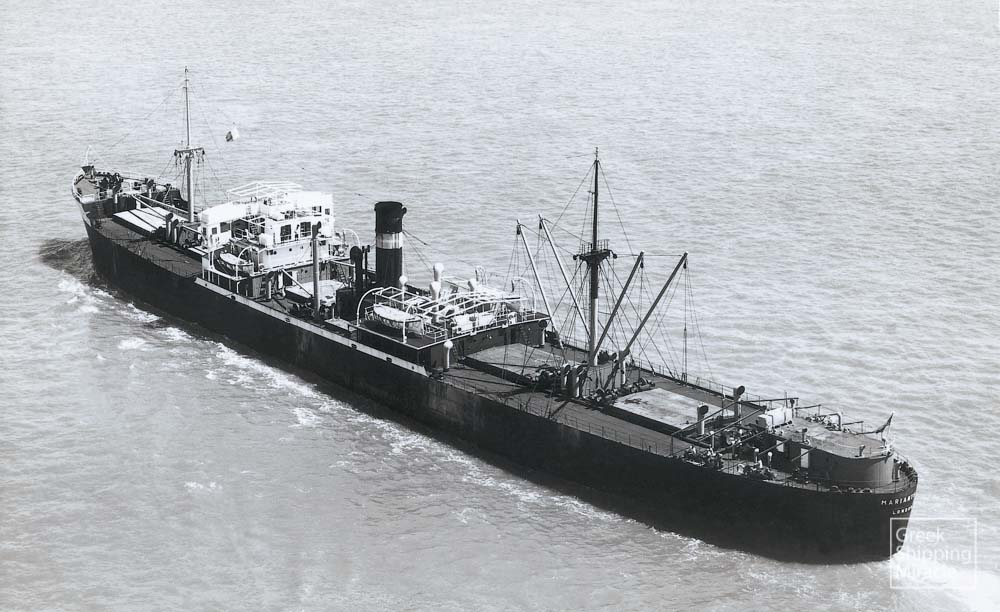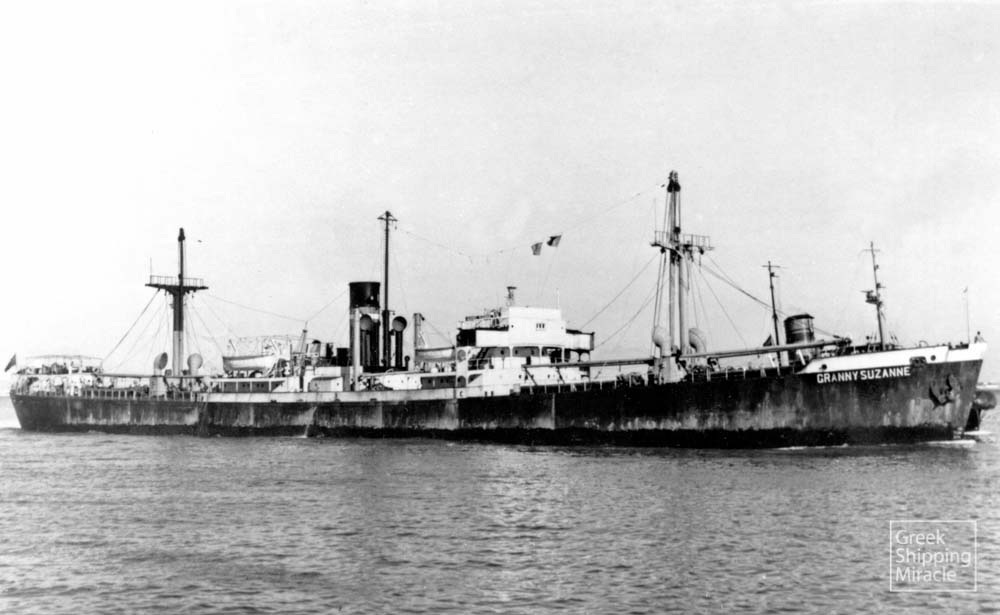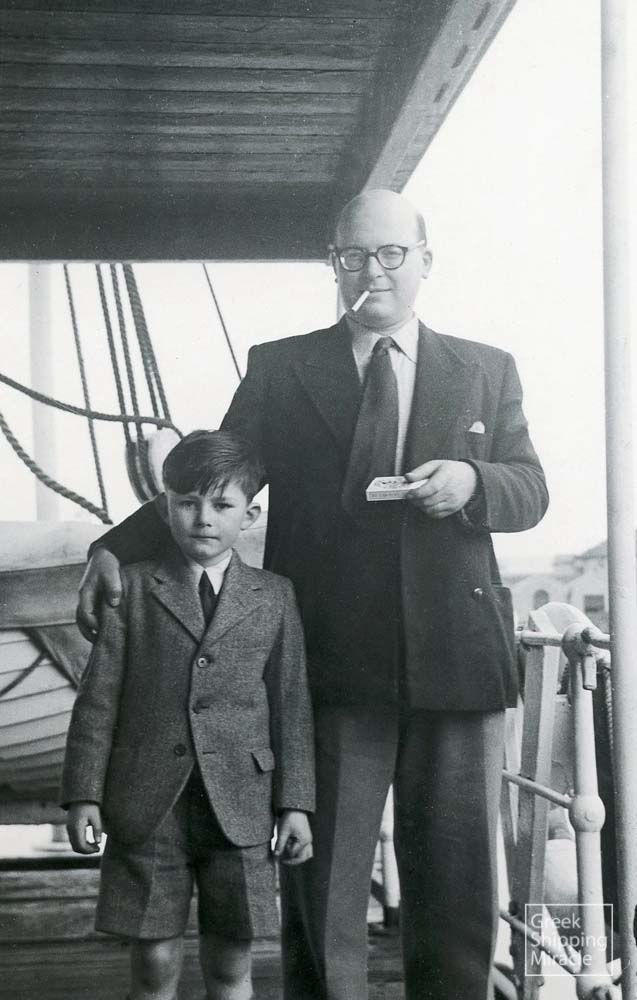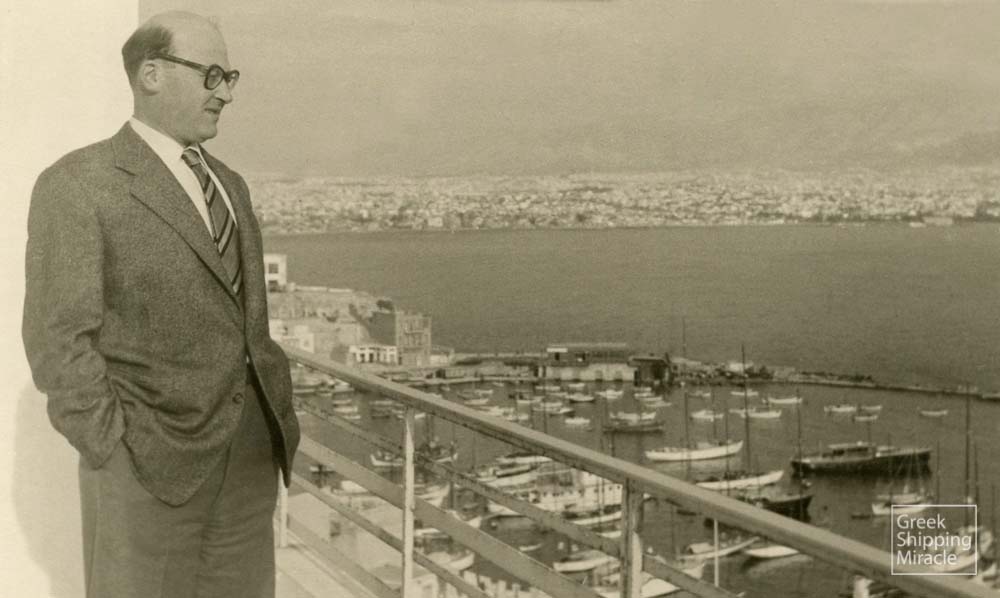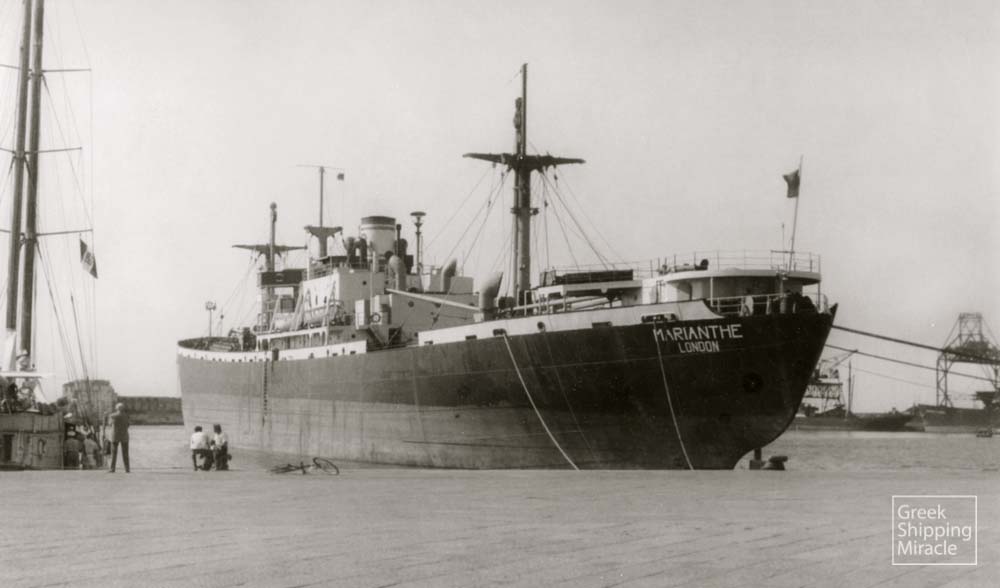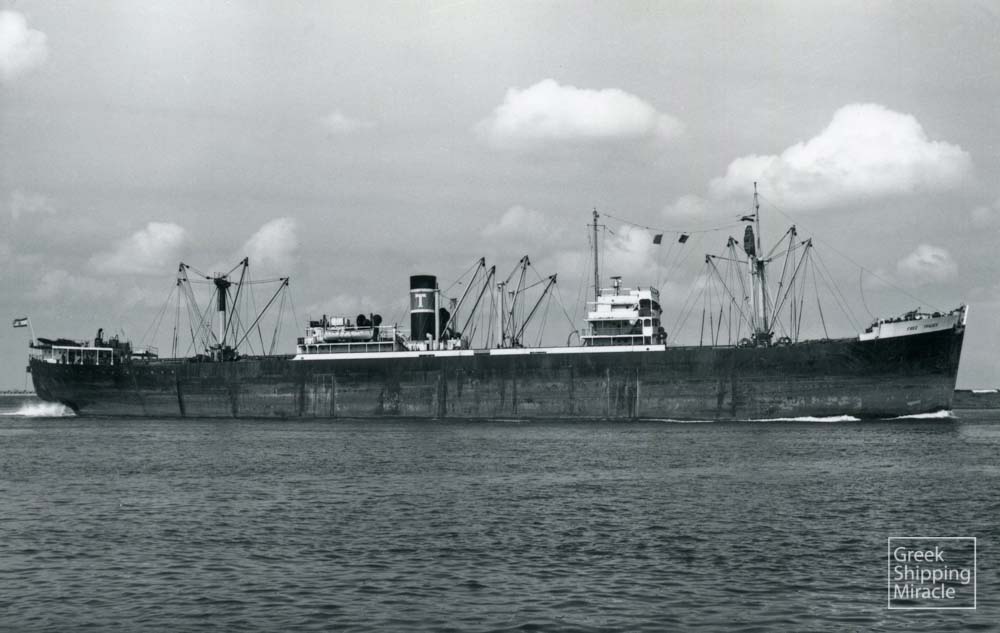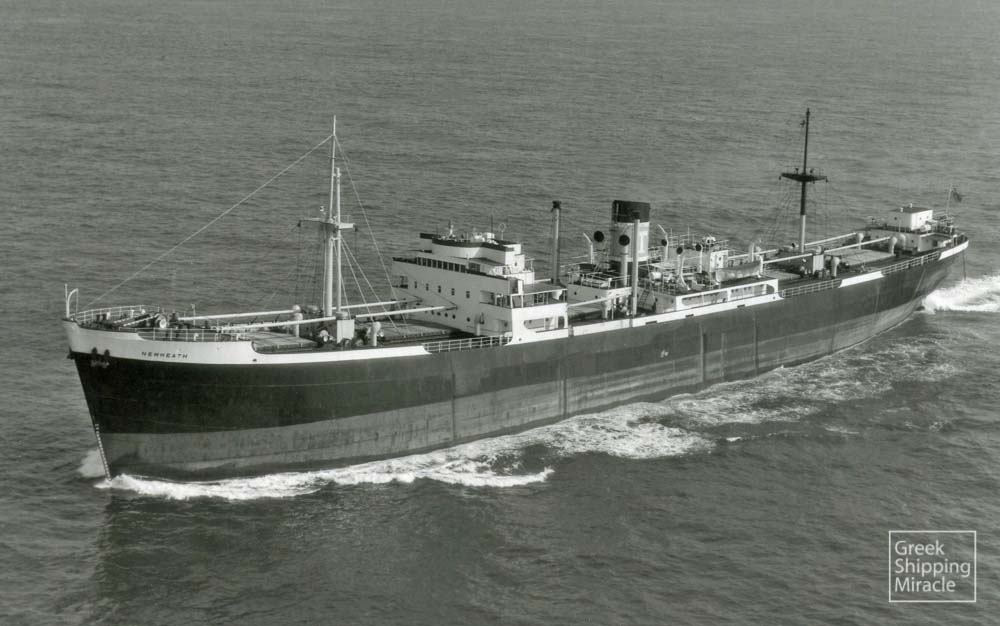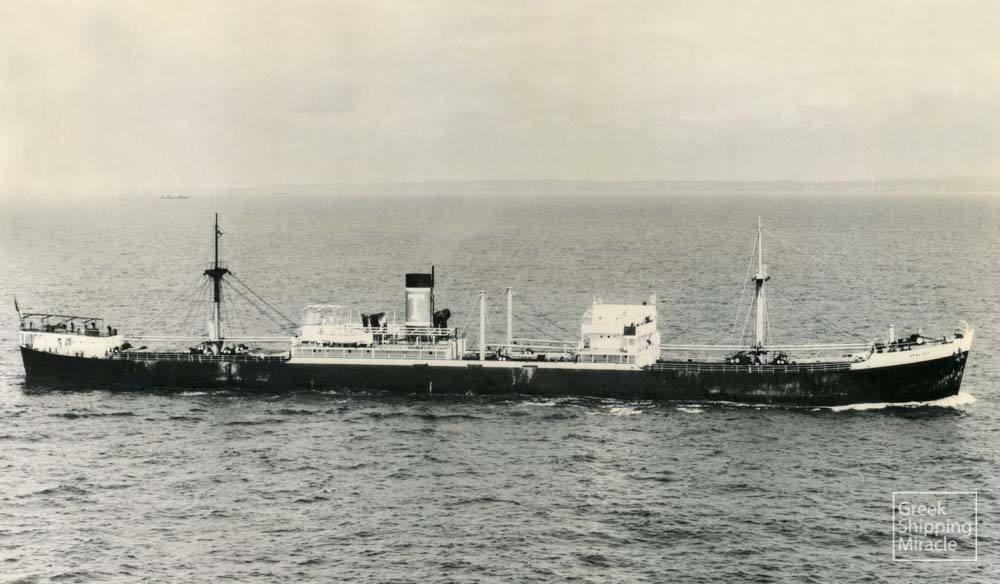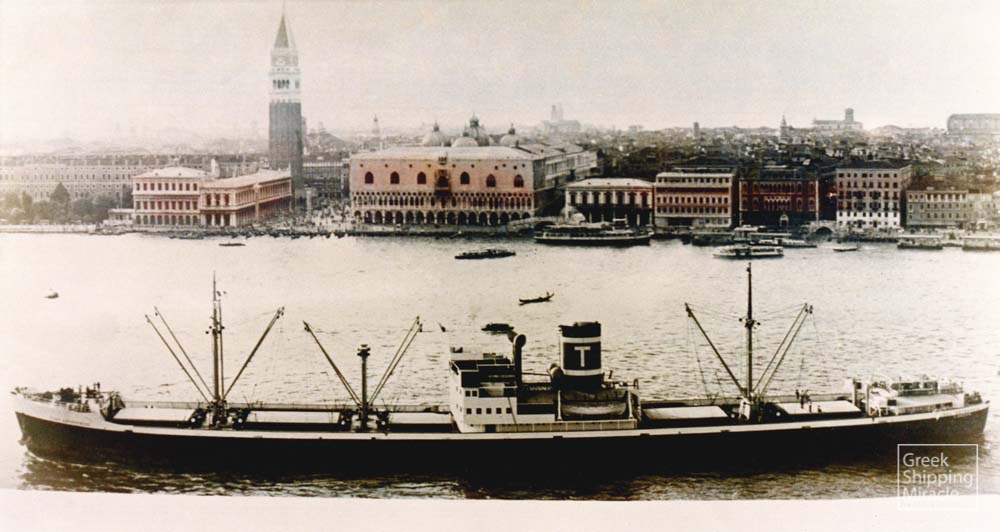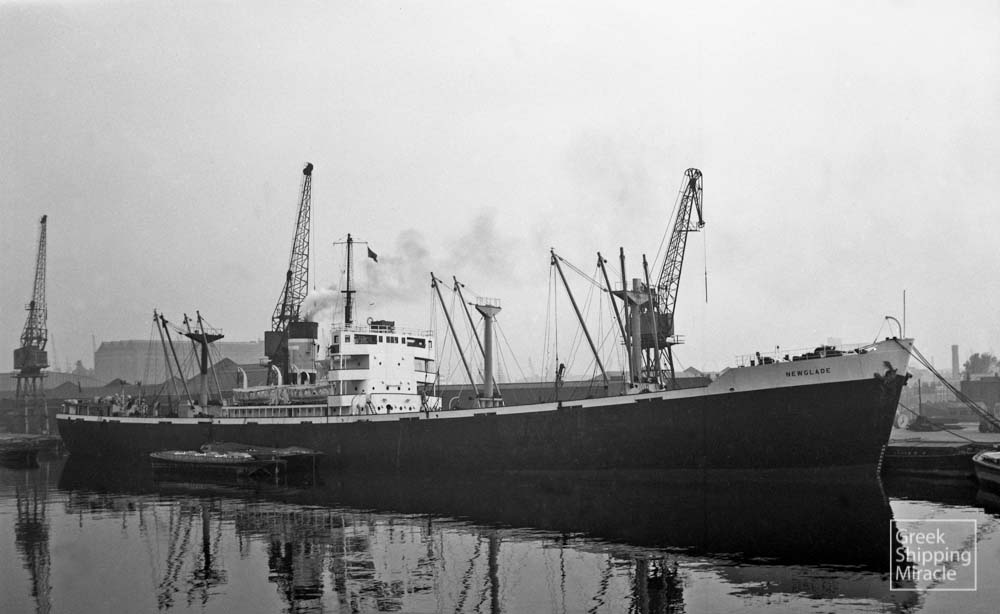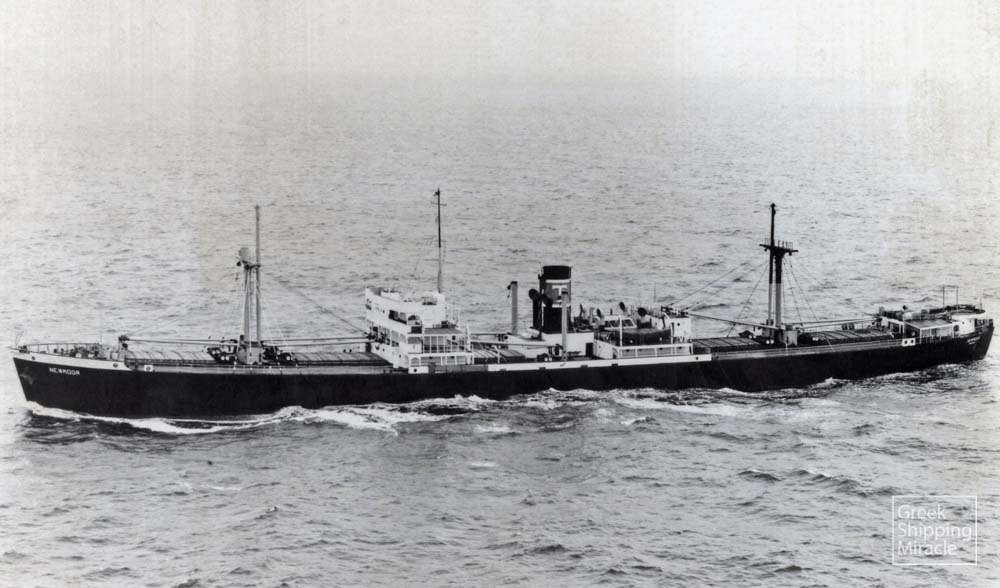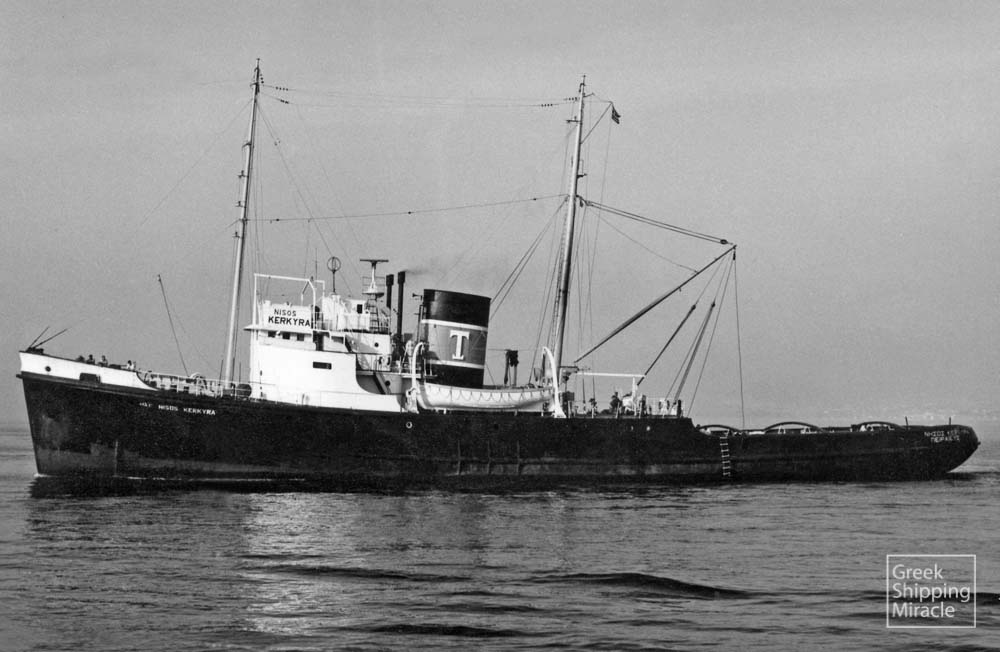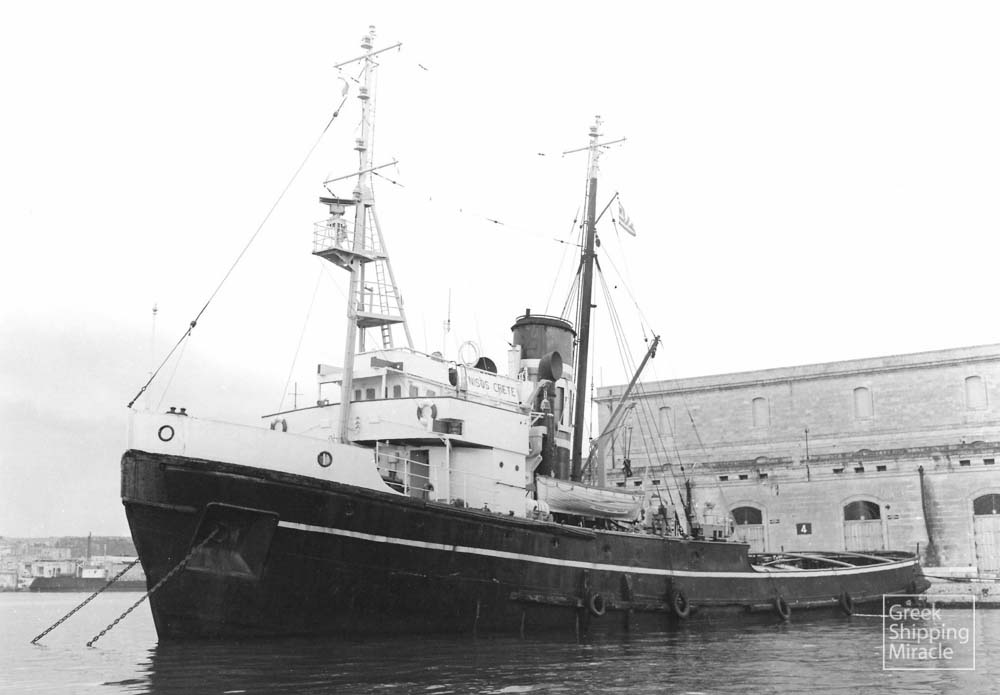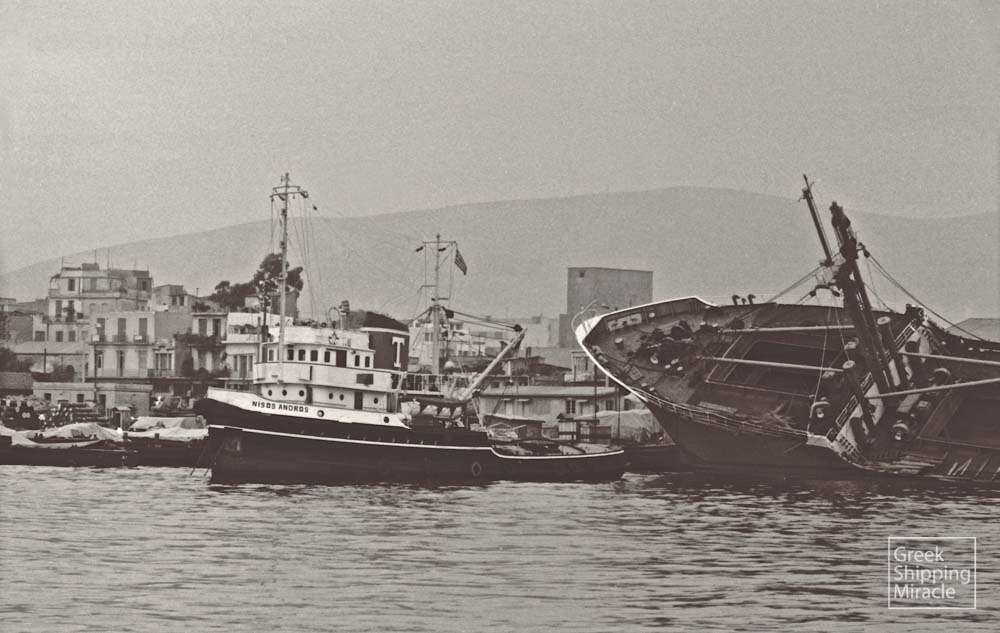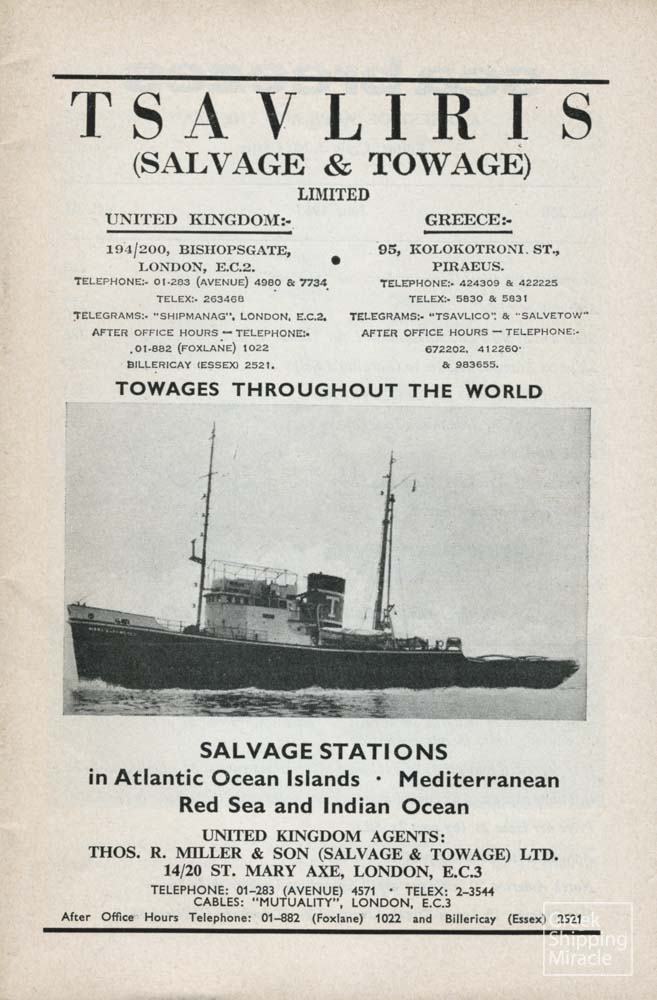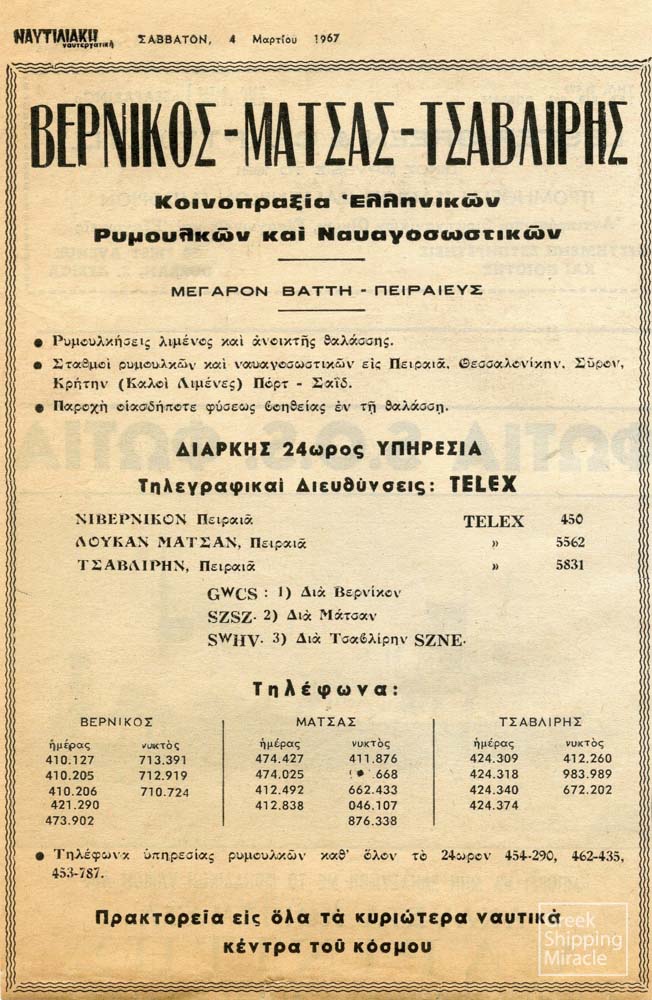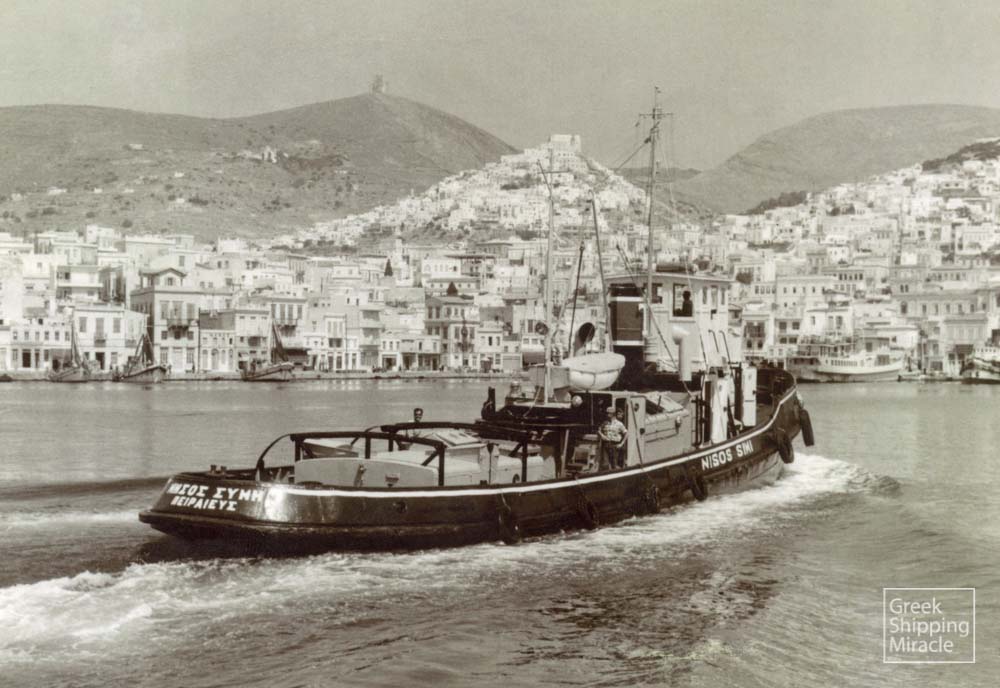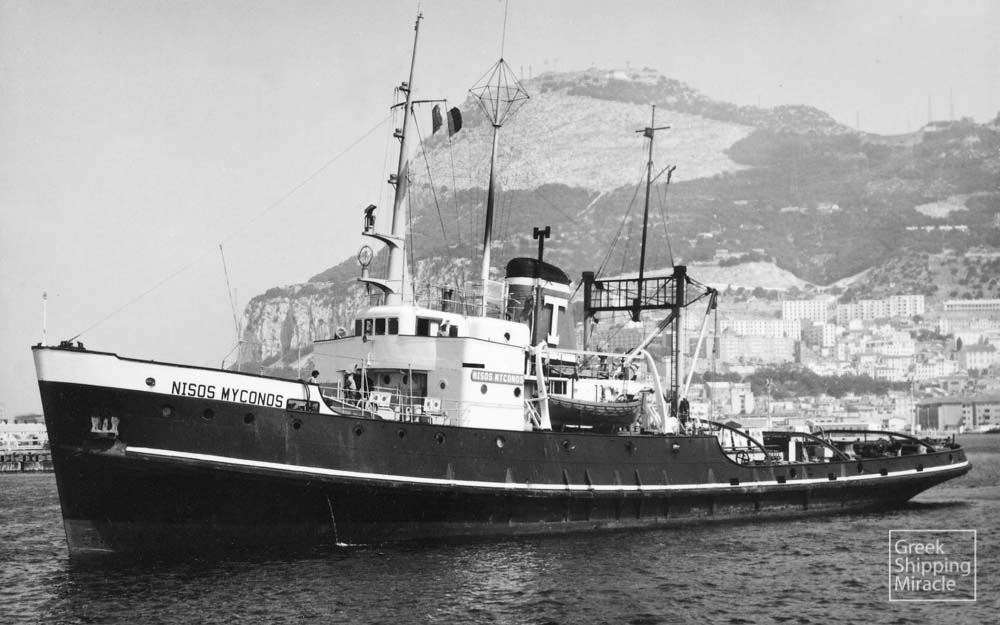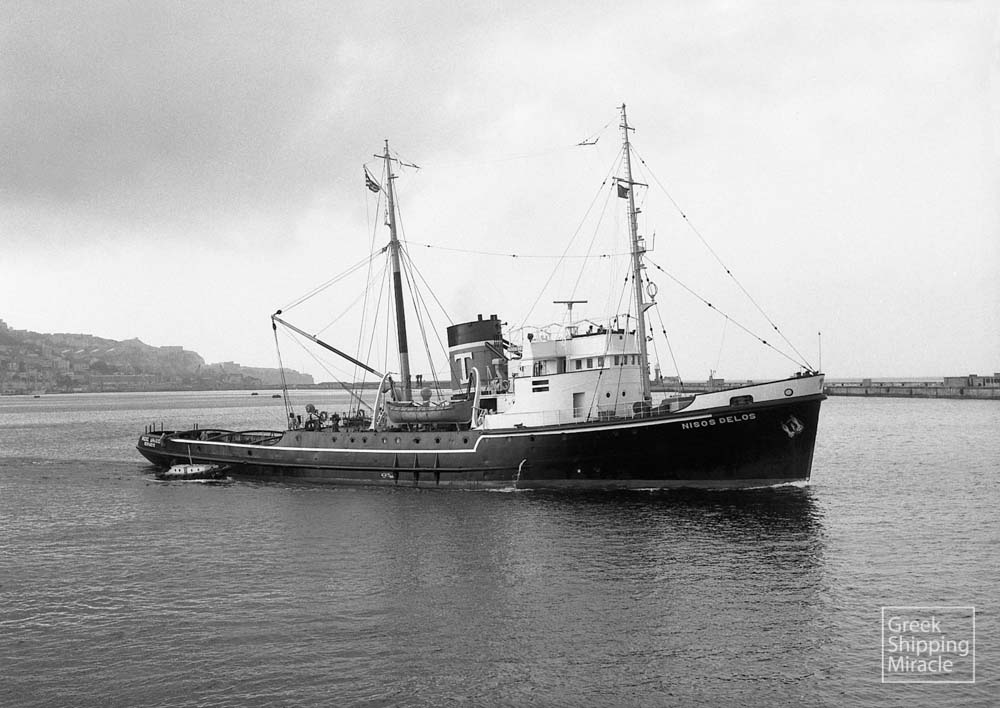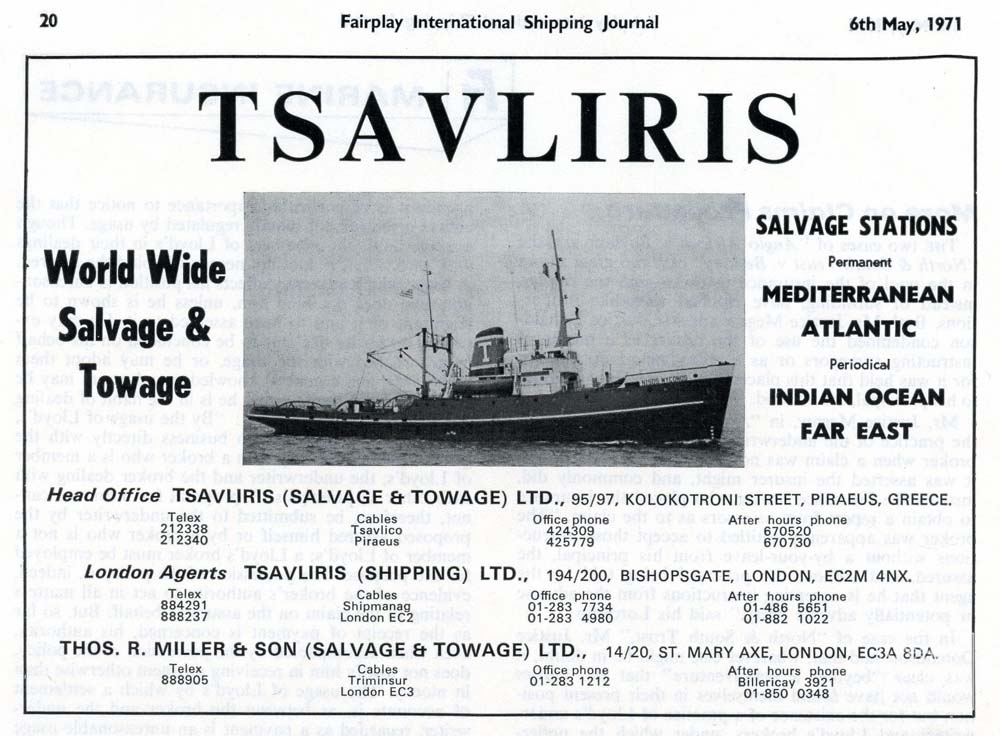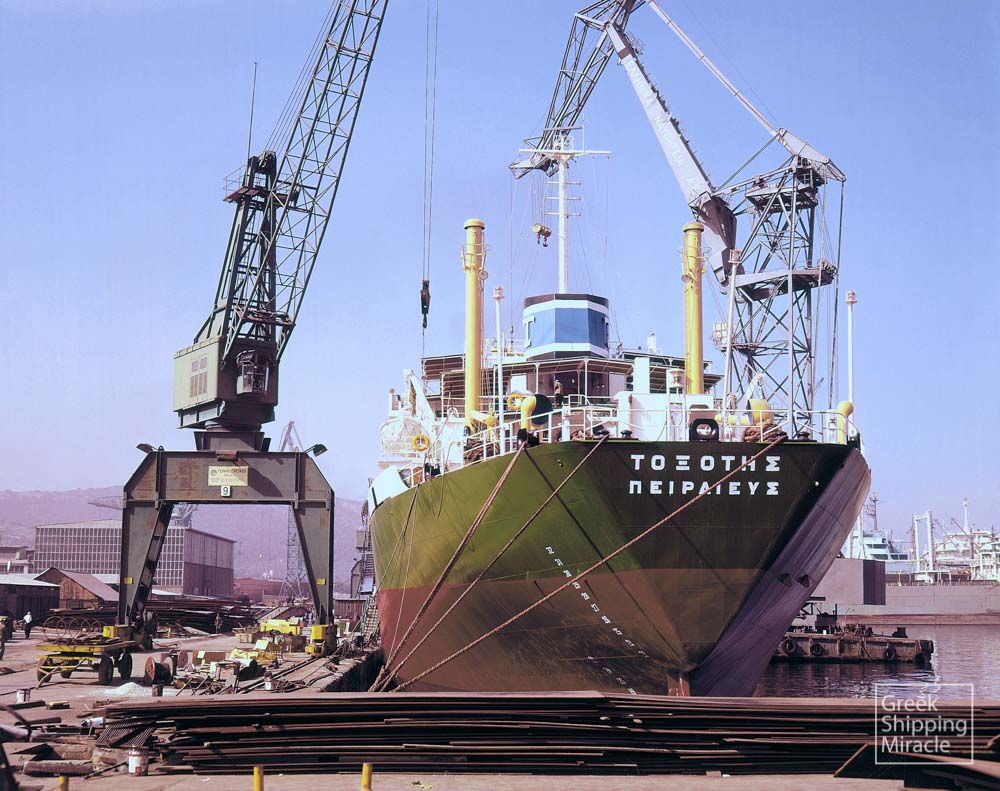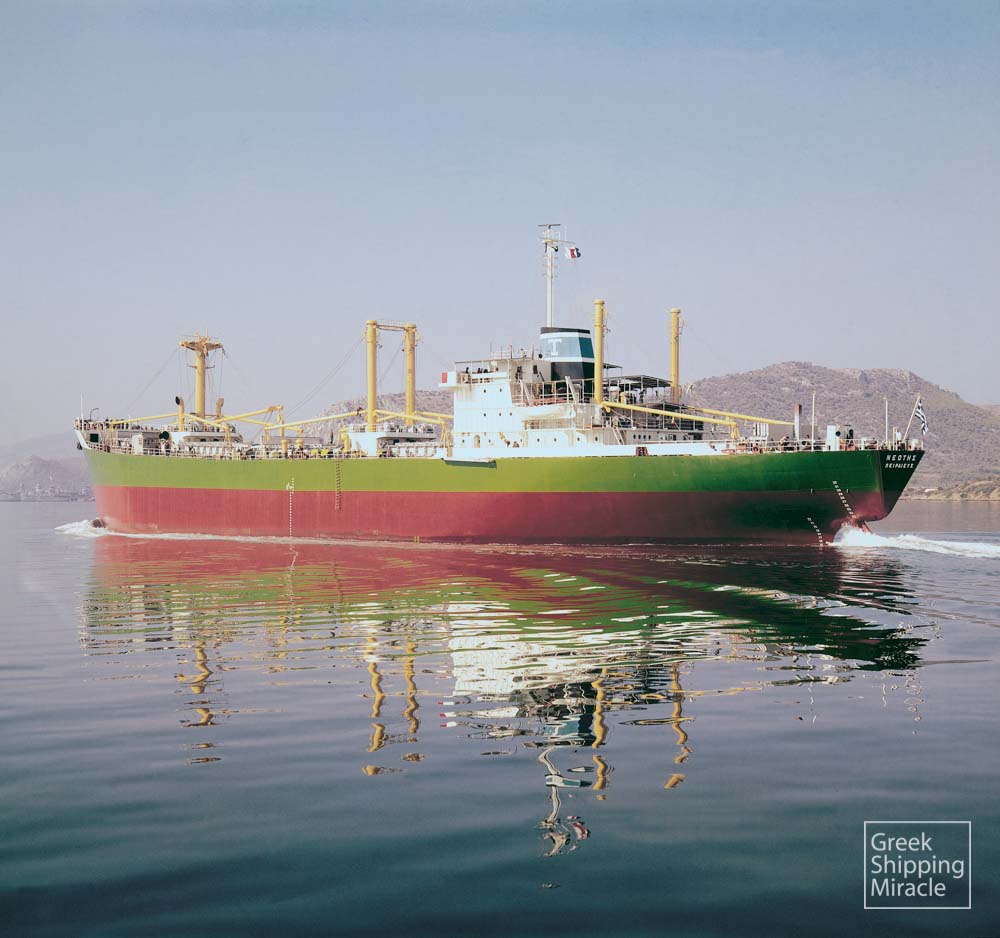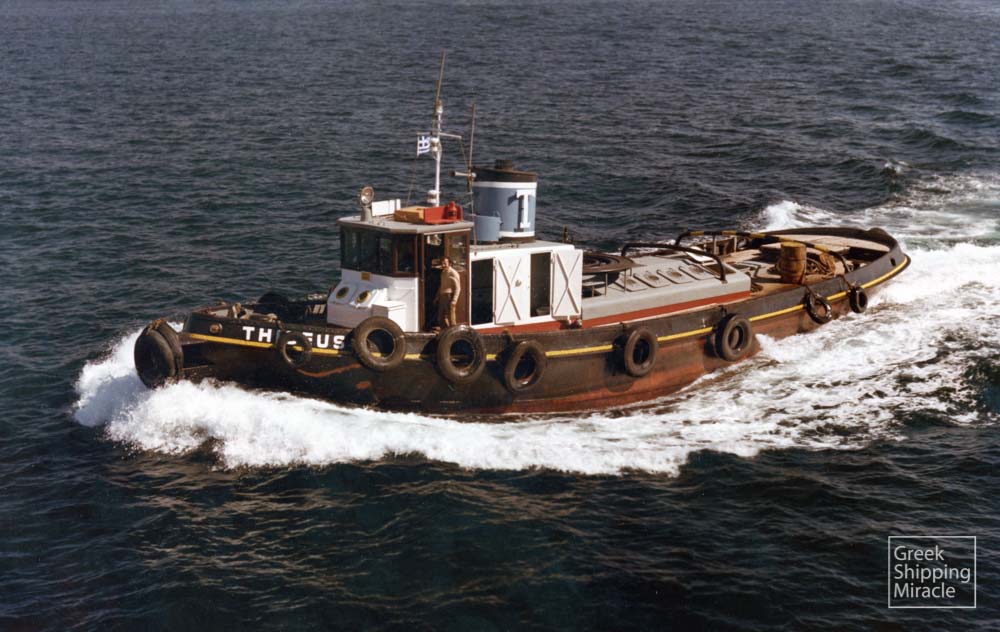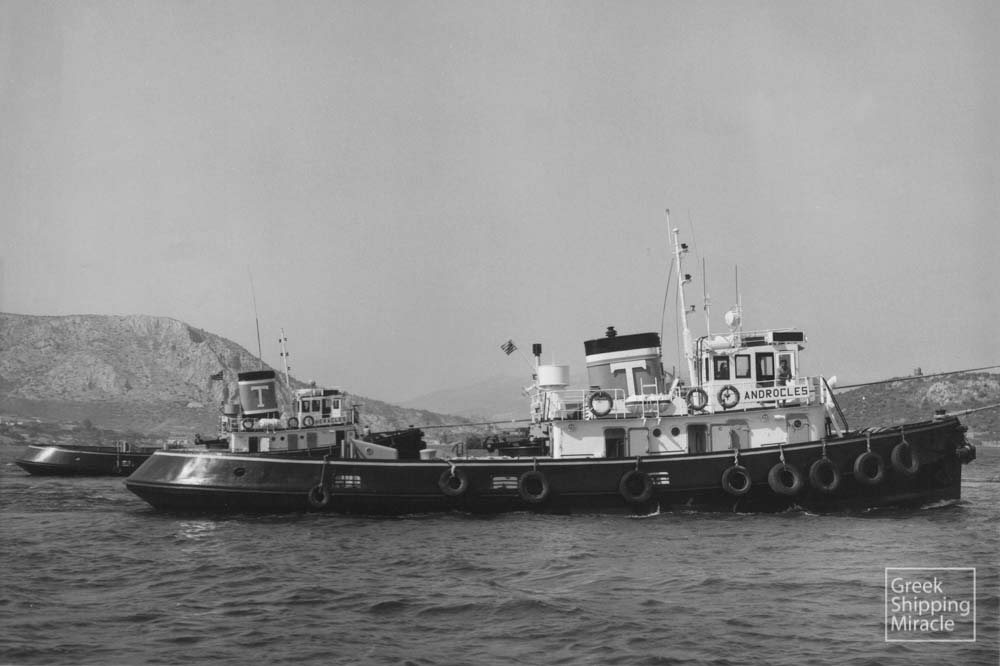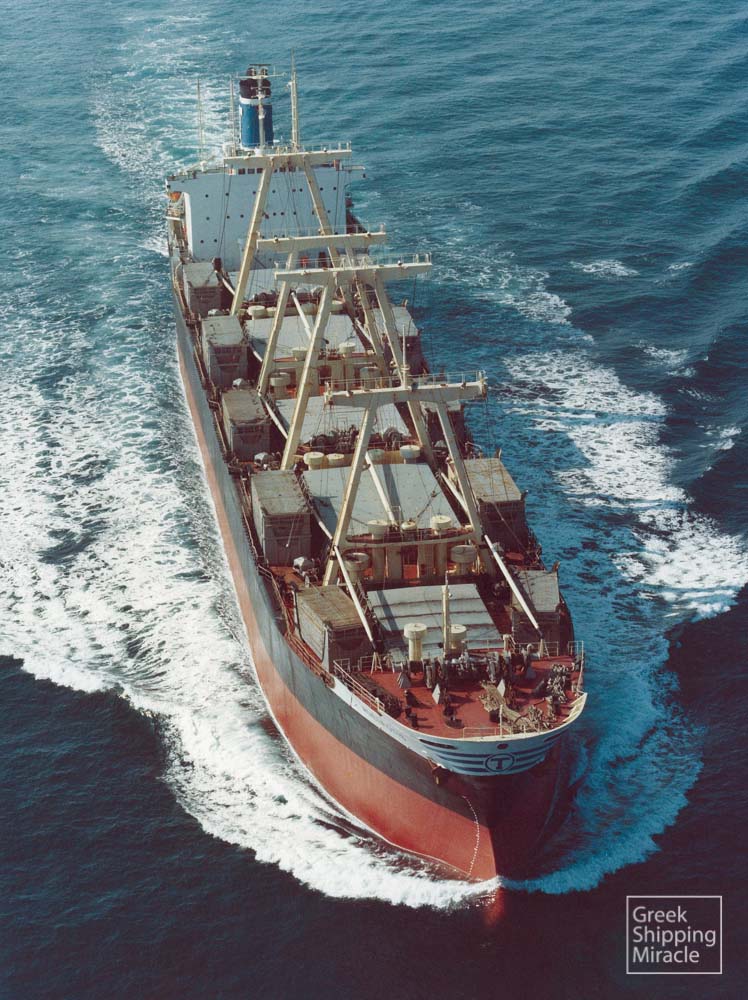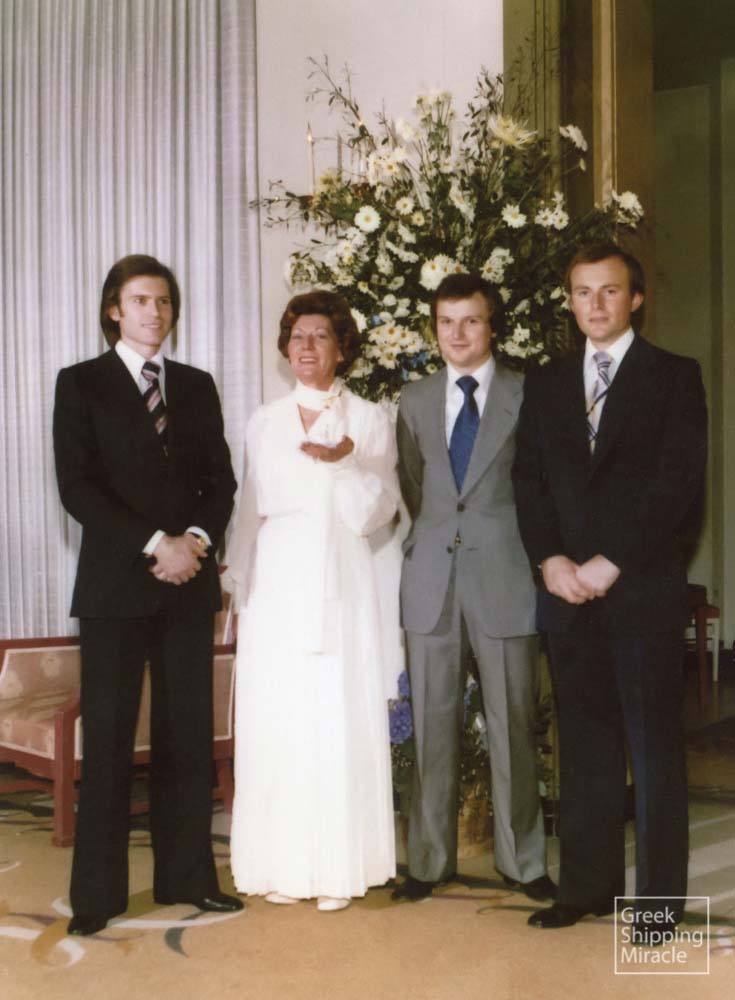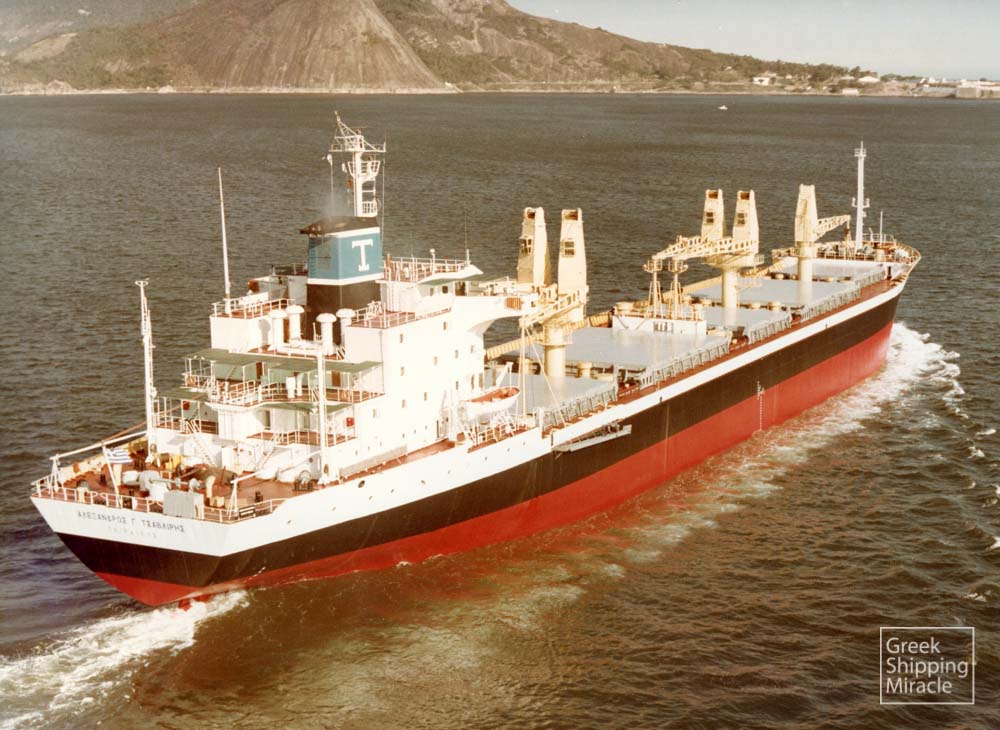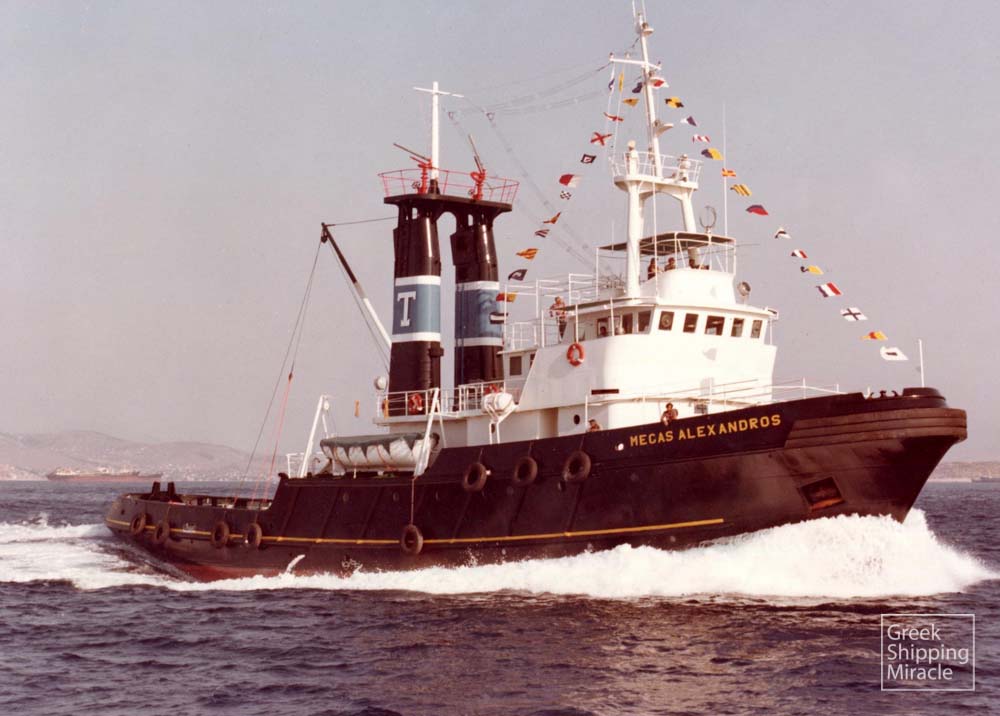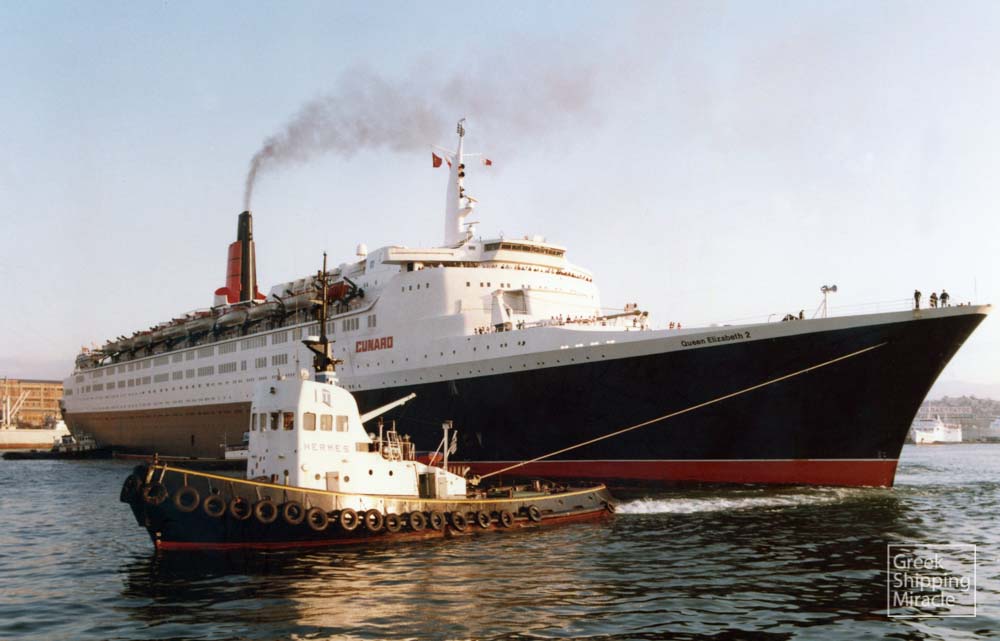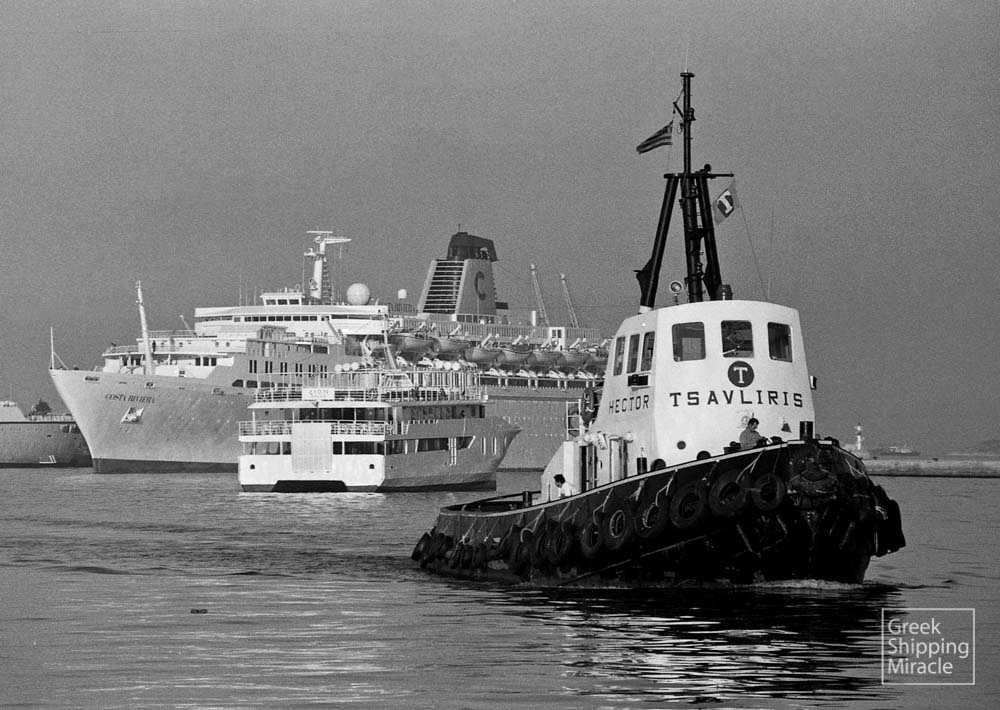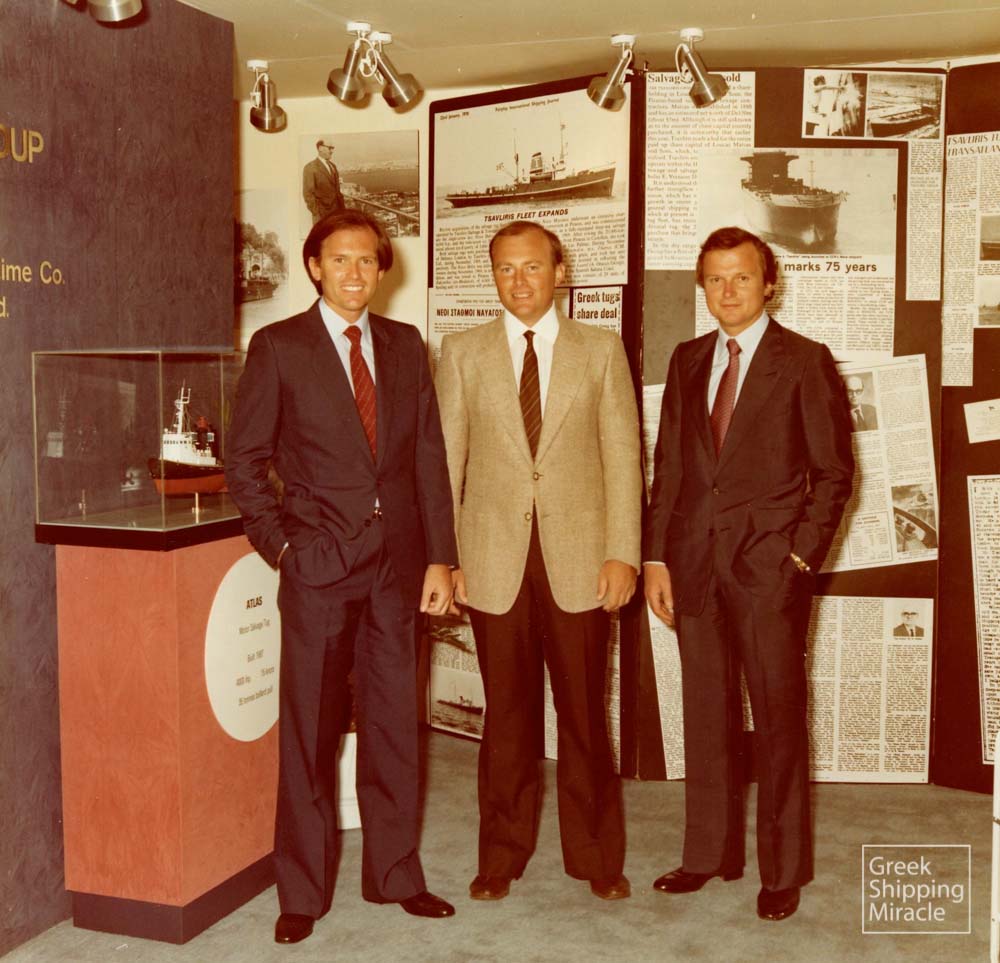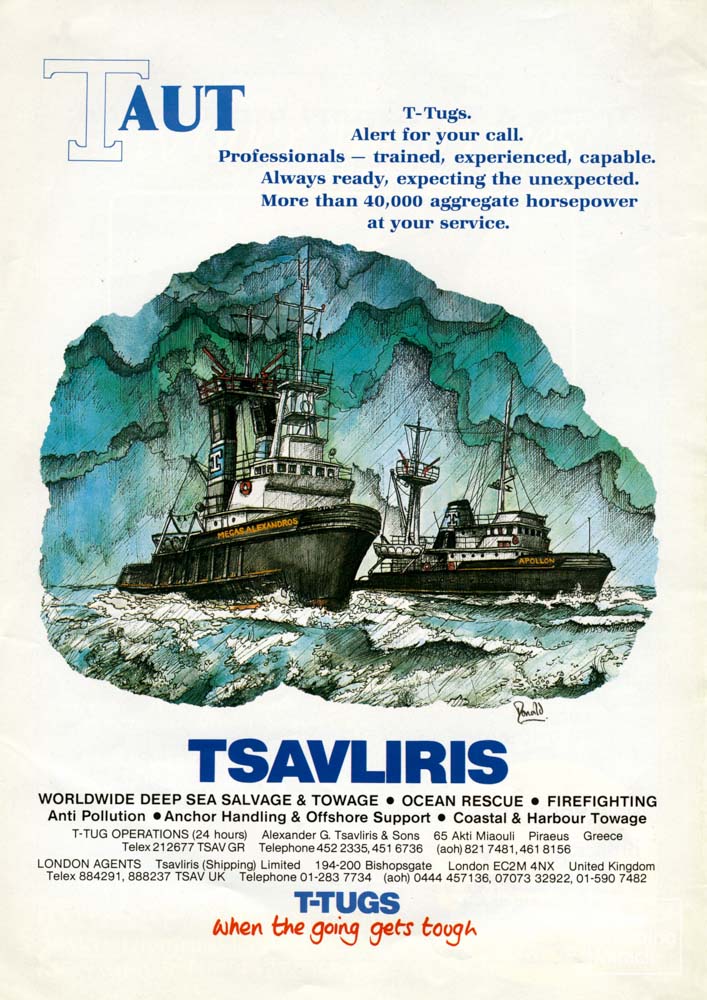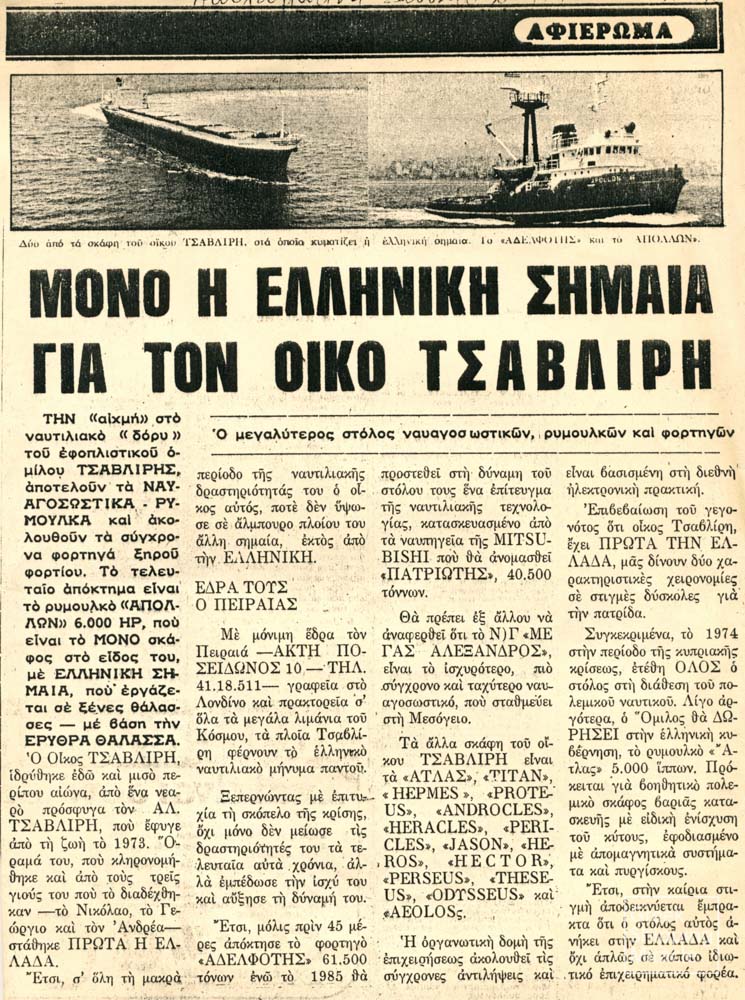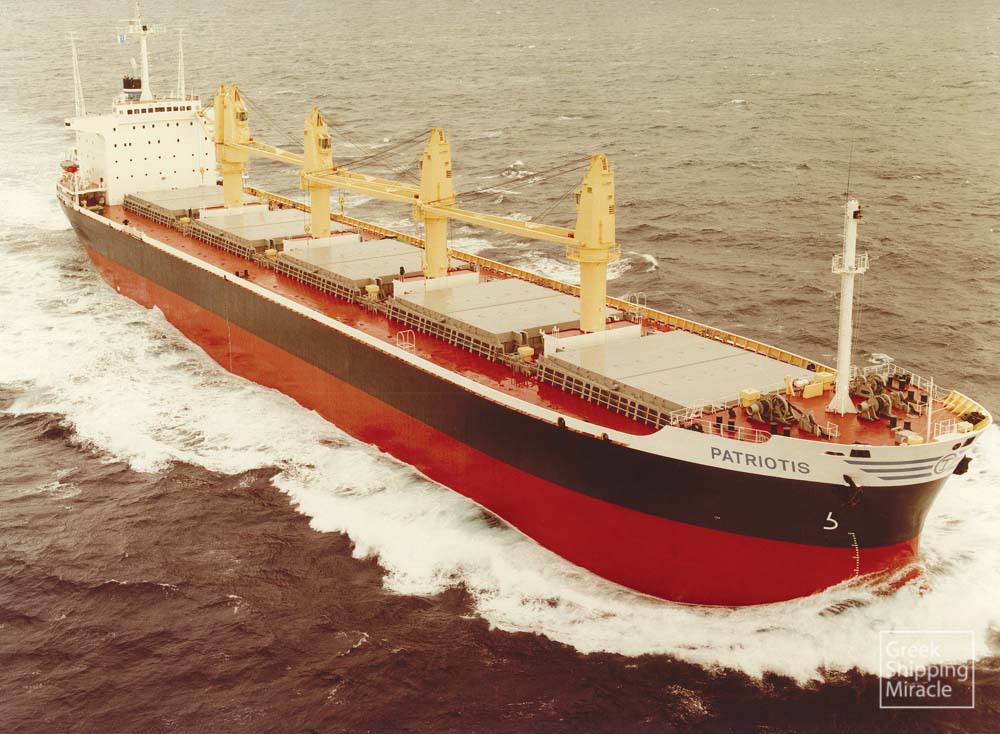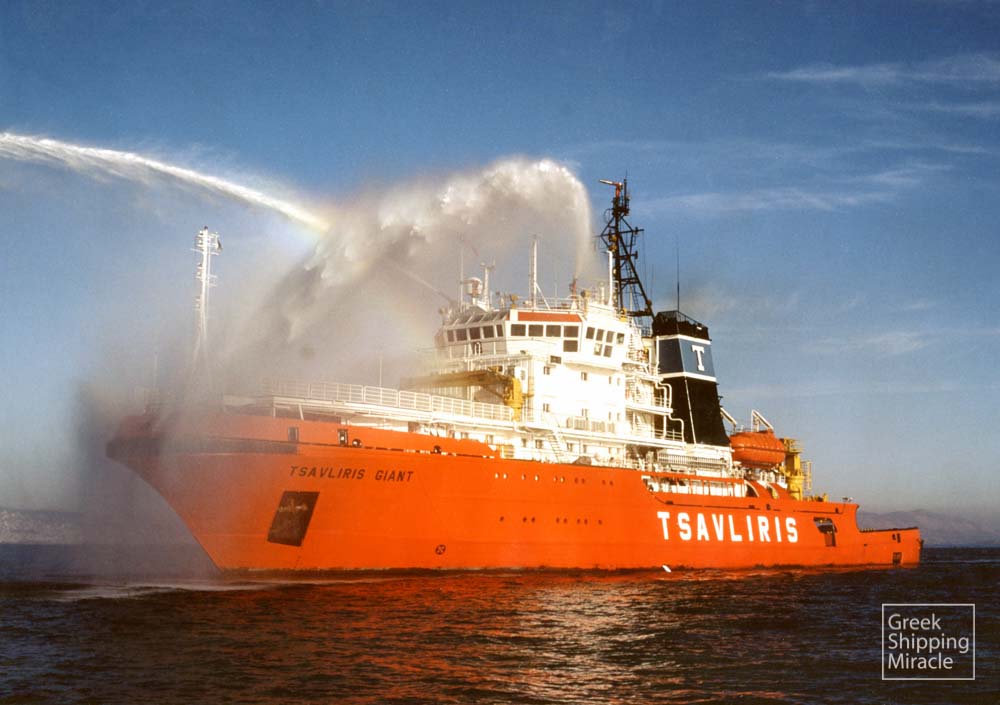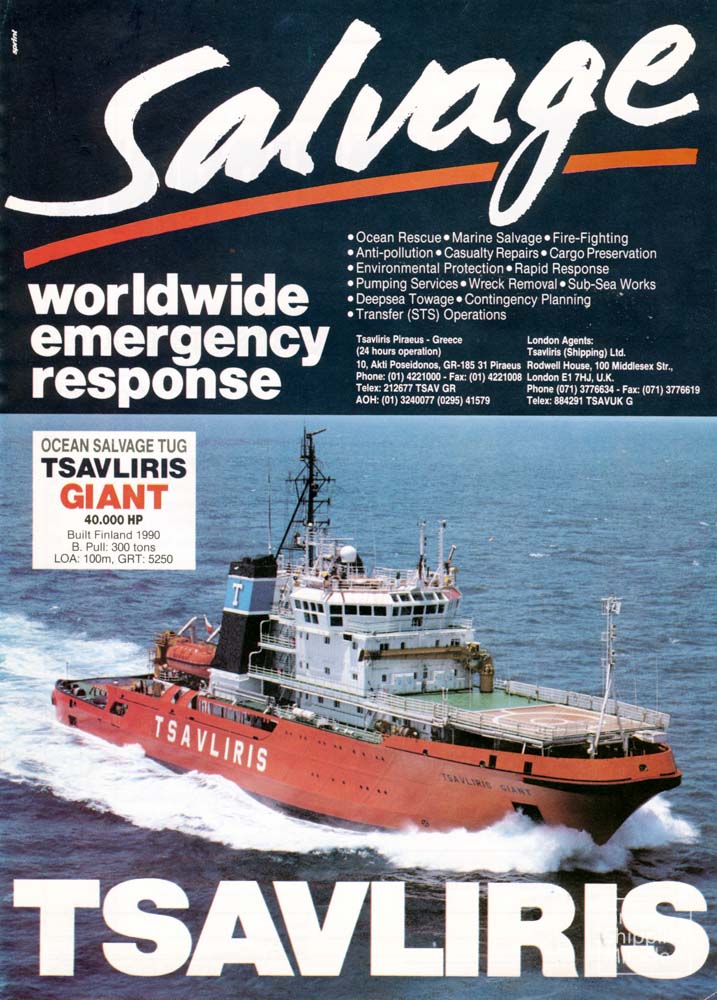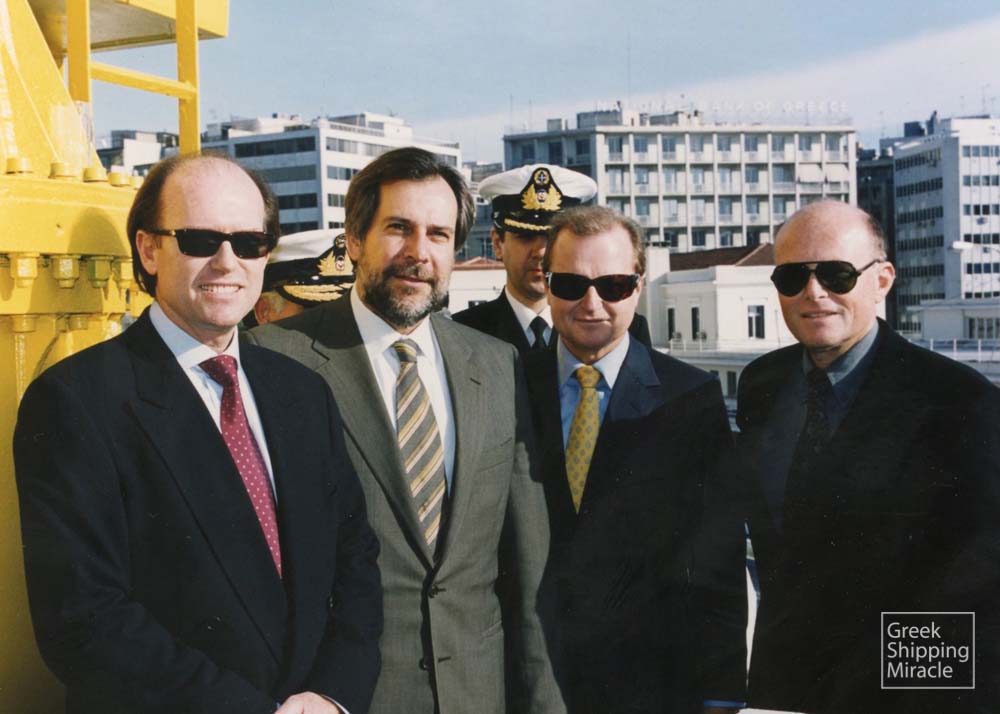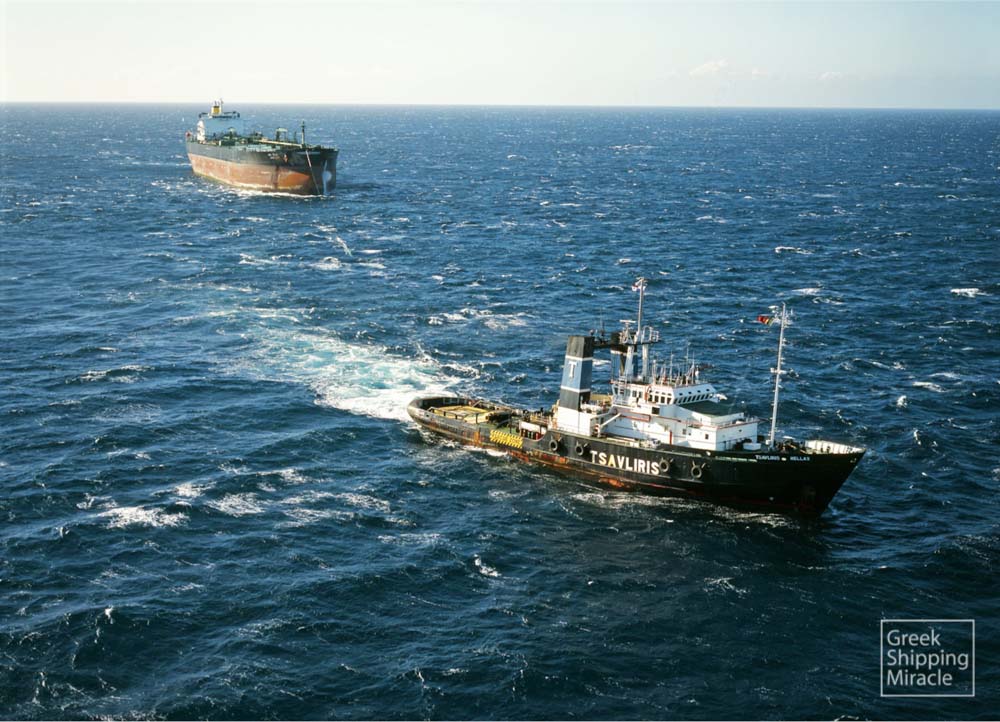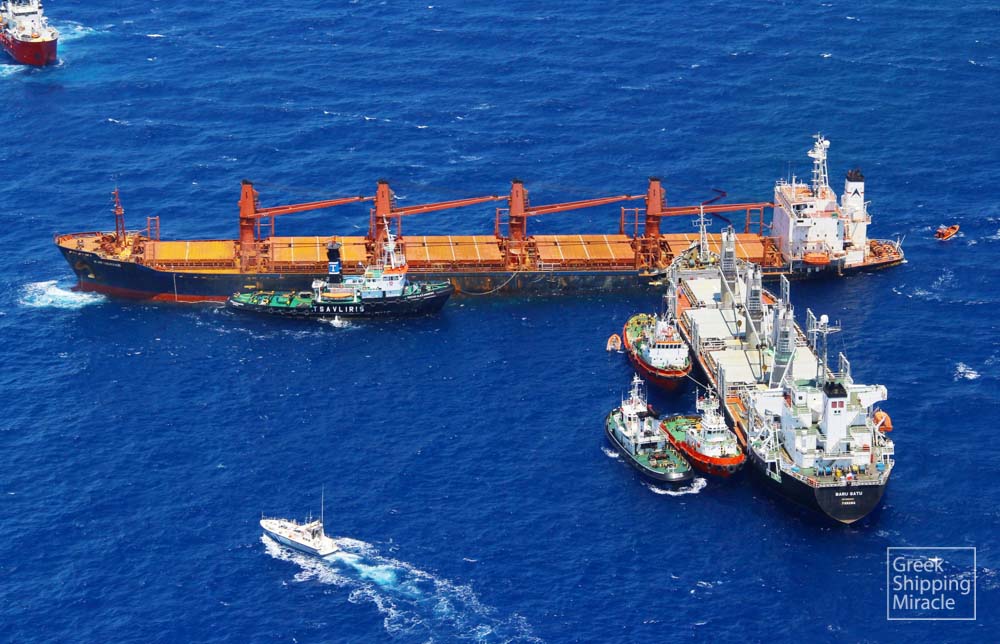THE ALEXANDER G. TSAVLIRIS GROUP
Alexander G. Tsavliris was born in 1914 in Zonguldak, Asia Minor, a leading coal bunkering station in the Black Sea. His grandfather Andreas Tsavliris, a seafarer from Livartzi in the Peloponnese, had settled in Zonguldak in about 1890, opening a small hotel. A few years later, his son George was employed by the renowned local coal mining company Société D’ Héraclée until 1921, when he moved with his family to Therapia, on the outskirts of Constantinople. However, the 1922 Asia Minor Catastrophe forced the family to return to Greece, settling, like many other refugees, in Piraeus.
Following their move to Piraeus, George Tsavliris and his wife Marianthe – née Papadatos – faced significant difficulties supporting their large family. The tuition expenses of their third son, Alexander, were covered by his mother’s brother Nicolaos T. Papadatos, a successful entrepreneur, active in several sectors. Diligent and hardworking while still a student at a night school, young Alexander started working at the age of 15. He spent his mornings working on a small wooden steam-driven tug, acquired by his family in 1929 with Papadatos’ financial assistance. The tug was named ALECOS – nicknamed BOURBOULAS – and was employed towing barges carrying bunkering coal.
After finishing school, Alexander Tsavliris, encouraged by his uncle Nicolaos T. Papadatos, moved to London. He worked at Vergottis Ltd. and Goulandris Brothers Ltd., where he gained hands-on experience in shipping operations.
In July 1938, Alexander Tsavliris made his debut into shipowning through the acquisition of a 40% shareholding in the 1904-built, Greek-flagged cargo ship SUSSANNA acquired by Papadatos. The vessel traded for 3 years, before becoming a total loss on April 4 1941, following an air-raid in Corfu. In January 1940, a few months after the outbreak of World War II, Tsavliris established in London A.G. Tsavliris Ltd. with the participation of Papadatos being appointed as one of the company’s directors.
During WWIΙ, Tsavliris worked at the British Ministry of Transport in the department co-ordinating Greek merchant ships operating alongside the British fleet in Atlantic convoys. After the end of the War, having obtained in the meantime British citizenship, he remained in London, with his wife Claire – née Brown. The couple had three sons, Nicolas born in 1946, George born in 1948 and Andreas born in 1950.
After WWII, Tsavliris re-entered shipowning, gaining recognition in shipping circles in the City of London within a short period of time. He was soon admitted as an underwriting member at Lloyd’s. In early 1947, he acquired a fleet of six coastal cargo ships, which were placed under the British flag. The vessels were employed in the timber trades between West Germany and several destinations in the United Kingdom and Western Europe, under a contract Alexander Tsavliris had secured from the British government as part of the German war reparations. Meanwhile, during the same year, he set up a new company, City Shipping Co. Ltd., which was renamed Tsavliris (Shipping) Ltd. in 1951, replacing A.G. Tsavliris Ltd. This move was prompted by Tsavliris’ expansion into oceangoing shipping through a number of second-hand acquisitions between December 1949 and the mid-1950s.
In 1956, Tsavliris acquired a second hand cargo ship which was renamed GEORGIOS TSAVLIRIS, and placed under the Greek flag, also establishing his own office, namely Tsavliris (Hellas) Maritime Co. Ltd., in Piraeus. During the following years, he expanded his fleet, through the acquisition of ships that were all placed under the Greek flag in response to the government’s appeal for the strengthening of the Greek registry.
The 1960s was the most productive period in Tsavliris’ career. Despite the freight market crisis, he sought new opportunities. In 1961, two vessels that were placed under the fast-rising Lebanese flag joined the fleet, while between 1962 and 1964, he returned to the British registry, placing nine newly-acquired war-time-built ships. In the mid-1960s, some of his vessels registered under the newly-established Cyprus registry, while by the end of the decade his entire cargo fleet was operating under the country’s flag. During the same period, the Tsavliris group greatly benefited from its decision to deploy a large part of its fleet in the transportation of cargoes to and from Cuba.
Moreover, the 1960s were marked by the group’s entry into the sector of tugs and salvage operations. Inspired by a random event, Tsavliris decided to get involved with this business – largely unknown to Greek shipowners – by acquiring at auction in 1964 a tugboat which was renamed NISOS CRETE.
In the same year, he also established Tsavliris (Salvage & Towage) Ltd., which acquired 17 tugs and salvage vessels within a period of about 18 months. Most of these ships underwent essential repair and conversion works
in Piraeus, a project that required a capital investment of about £500,000 put up by Tsavliris himself.
The new enterprise soon evolved into the largest operator of its kind in the Mediterranean, offering its services both at the port of Piraeus, as well as at other Greek ports. At the same time, it expanded its operations in other countries by setting up salvage stations in the Red Sea, the Atlantic and the Indian Ocean. In order to promote the group’s interests, a new company was formed in London, namely Thos. R. Miller & Son (Salvage & Towage) Ltd., with directors Alexander Tsavliris, H.B. Tiley and P.N. Miller.
In less than three years, the company’s fleet of tugs and salvage ships totaled 29 units aggregating 25,000 hp, whereas 30 persons were employed at the Tsavliris London office and another 30 in Piraeus. About 300 seafarers were employed onboard the tugboat and salvage fleet, the majority of whom were Greek. In October 1965, the group formed the Hellenic (Salvage & Towage) Consortium Vernicos-Matsas-Tsavliris, a joint venture with two other Greek tug operators, serving the Greek archipelago for over 25 years in various forms and compositions.
In the late 1960’s, Alexander Tsavliris decided it was time to renew his ocean-going cargo-ship fleet, placing an order at Hellenic Shipyards S.A. for the construction of two SD-14 type cargo ships for delivery in 1971.
However, before the vessels’ delivery, Tsavliris was diagnosed with serious health problems, which led to the reevaluation of the group’s entire strategy. To this effect the number of tugs was drastically reduced. Several older tugs were sold for demolition in late 1970 while others were sold enbloc to another Greek shipping group in January 1972, but continued operating under the joint venture, members of which had both acquired several tugs from Tsavliris.
During his illness, Tsavliris endeavoured to pass on to his three sons the knowledge about the operation of the family business. All three had already gained valuable experience about the group’s activities, by spending time onboard group vessels, at the Tsavliris office, as well as with their father who was often working from home.
After a five-year long battle, Alexander G. Tsavliris passed away on 12 October 1973.
In the meantime, the group had taken delivery of the two newly-built SD-14 ships from Hellenic Shipyards, while the rest of the cargo fleet had been sold. The salvage and towage fleet was reduced to 11 units. Under these circumstances, Nicolas, George and Andreas Tsavliris adopted their own strategy in the early years of a decade that was marked by the explosive growth of the world fleet, driven by continuous deliveries of vessels of an increasing carrying capacity. Another development that shaped shipping during that period was the two major oil crises, which led in the 1980s to the industry’s worst recession in post-war years.
The first initiative of the Tsavliris brothers was concentrated on the group’s salvage and towage operations. In 1973, a few months before their father’s passing away, they established Maritime Commercial Enterprises Ltd., appointing as manager their uncle Theodore G. Tsavliris. The company operated independently and acquired 12 tugs within a short period of time.
Nine of the newly acquired vessels had diesel engines, minimising operational costs over the coming years when soaring oil prices made steam-powered ships uneconomic. As a result, the brothers decided to sell the three steam-driven tugs, as well as another seven older-generation vessels that had been acquired by their father.
The next step the three brothers took was to expand their ocean-going cargo-ship fleet by acquiring a 7-year-old, 27,000 dwt bulk carrier, which was renamed ADELFOTIS and was placed under the Greek flag. The group strengthened its cargo ship fleet over the next few years by ordering the construction of two 26,272 dwt bulk carriers at the Brazilian shipyard CCN Estaleiros Maua in Niterói. The ships were delivered in September 1978 and in December 1979 as the Greek-flagged ALEXANDROS G. TSAVLIRIS and CLAIRE A. TSAVLIRIS respectively. During the same period, the tugboat and salvage fleet, operated since 1975 by the newly established company Alexander G. Tsavliris & Sons Maritime Co. S.A., was further enhanced through the acquisition of another three second-hand motor tugs, while in July 1979, the brothers donated their salvage tug ATLAS (ex NISOS ZAKYNTHOS) to the Hellenic Navy.
The volatile freight market throughout the 1970s set new standards in shipping. Taking advantage of a sharp rise in vessel values, the group sold in 1981 at a substantial profit the bulk carrier ADELFOTIS investing the proceeds in the acquisition of another five tugs.
In 1984, the Tsavliris brothers acquired an 11 year-old, 61,000 dwt bulker, which was renamed ADELFOTIS raising the Greek flag. A few months later they placed an order with Mitsubishi Heavy Industries in Nagasaki for a 42,300 dwt bulk carrier, the PATRIOTIS, delivered in February 1985 under the Greek flag.
The deep recession in the freight market, which began towards the end of 1981, bottoming out in mid-1986, led to severe losses for many ship operators. Apart from a devastating crisis, Greek-flagged ships also had to face ill-conceived policies adopted by the Greek government during the same period. Within such a negative environment, the Tsavliris brothers decided to phase out their dry cargo fleet. The fleet’s five ships were sold between 1987 and 1988, with the brothers maintaining a shareholding in most units. The above ships marked the end of an era during which the family group operated more than 100 vessels of various types and sizes.
Since the early 1990s, the Tsavliris group has focused on salvage and towage operations. Its presence in this challenging sector has been marked by the fleet’s renewal on an ongoing basis through the addition of high-specification vessels and salvage assets. The adoption of this strategy, in conjunction with the group’s long-standing presence in the sector, has turned it into one of the world’s leading salvage and towage operators.
